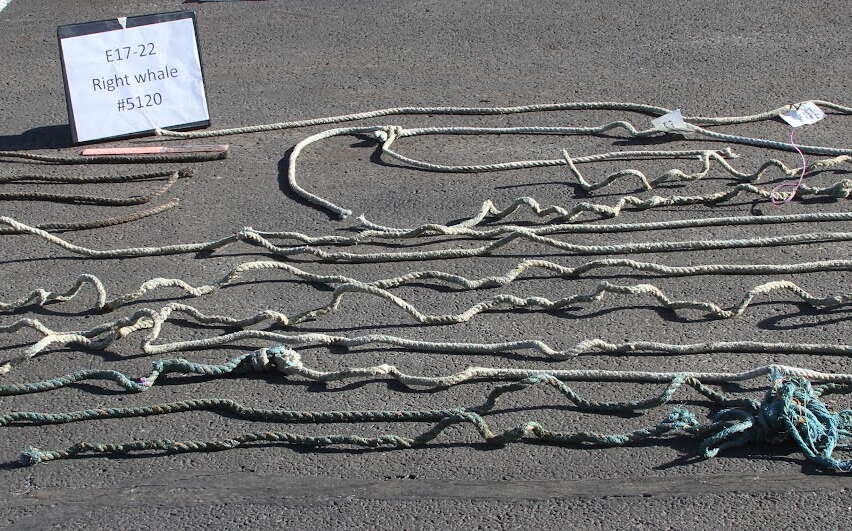
Maine lobstering line entangled whale that died, but question remains: Where?
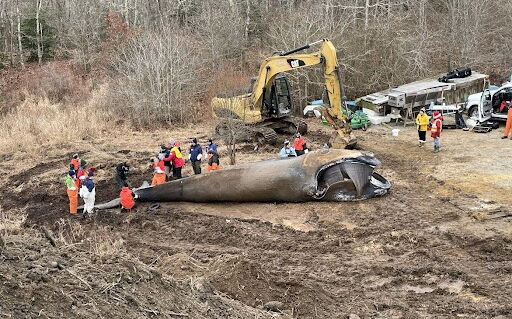 Courtesy / NOAA Fisheries
The necropsy (animal autopsy) of North Atlantic right whale #5120 is shown in this NOAA photo.
Courtesy / NOAA Fisheries
The necropsy (animal autopsy) of North Atlantic right whale #5120 is shown in this NOAA photo.
State officials want to know whether the Maine lobstering rope recently found tangled around a dead North Atlantic right whale actually came from Maine waters — or from those belonging to the federal government.
“No buoy was collected with the rope which could help identify the gear owner and potentially help determine a precise location of entanglement,” wrote Department of Marine Resources Commissioner Patrick Keliher, in a statement to the industry on Wednesday.
Most of Maine’s lobster fishing occurs in state waters. Colored markings on trap rope designate the area. Gear used in Maine waters has purple markings; gear in federal waters has green markings.
Keliher continued, “While no green markings were found on the rope, Maine DMR has not concluded if this gear is consistent with state or federal waters gear. With only two purple marks retrieved and portions of the surface system missing, Maine DMR analysis of the recovered gear could indicate different gear configuration scenarios, some of which suggest state waters and others which suggest federal waters.

“We are continuing to investigate to see if we can better answer this question.”
On Jan. 28, the National Marine Fisheries Service was notified of a deceased female North Atlantic right whale found on Martha's Vineyard, Mass. Working with the International Fund for Animal Welfare, stranding network partners and local responders, the Fisheries Service recovered the carcass and conducted a necropsy.
The whale was identified as No. 5120 through a catalogue of the endangered population kept by the New England Aquarium. The animal was born in 2021.
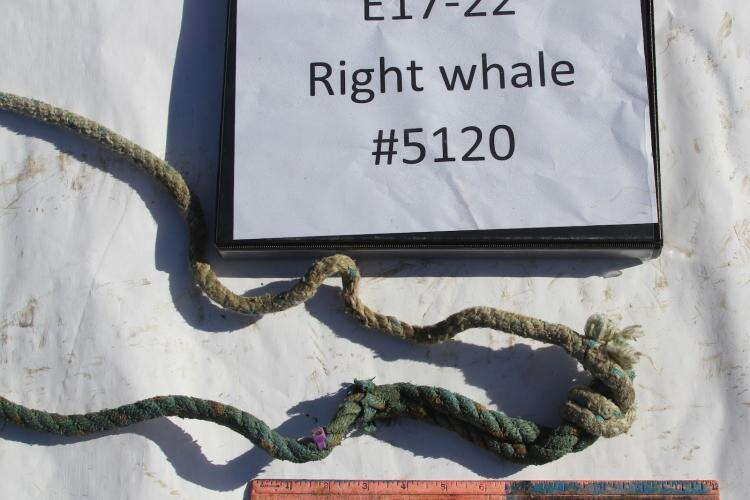
The necropsy, completed Feb. 1, confirmed a chronic entanglement, with rope deeply embedded in the tail, and thin body condition.
The animal had previously been sighted with entanglements, including August 2022 and January 2023.
She was last sighted alive, but in poor health, in June 2023 off New Brunswick, Canada.
After removing the rope from the carcass, an analysis determined it to be from Maine gear due to its purple markings.
“NOAA Fisheries has concluded that the rope is consistent with the rope used in Maine state water trap/pot buoy lines,” NMFS said in a news release.
The matter remains under federal investigation.
Industry statement
“The Maine Lobstermen’s Association is deeply saddened by the death of a juvenile right whale that NMFS has attributed to the Maine fishery,” the association said in a written statement.
“We know that entanglement in Maine gear is extremely rare. This is the first reported entanglement of a right whale in Maine lobster gear in 20 years and the first death attributed to the fishery.
"Maine lobstermen have made significant changes to how they fish over the last 25 years to avoid entanglement and continue gear testing. The MLA will continue this important work as we review the data and evidence that NMFS has collected.
"MLA remains committed to finding a solution to ensure a future for right whales and Maine’s lobster fishery.”
Consistent with Maine gear
Keliher said that he, along with Maine policy, science, and enforcement staff, traveled went to Massachusetts to inspect the gear, review NOAA findings and question them regarding any discrepancies they saw.
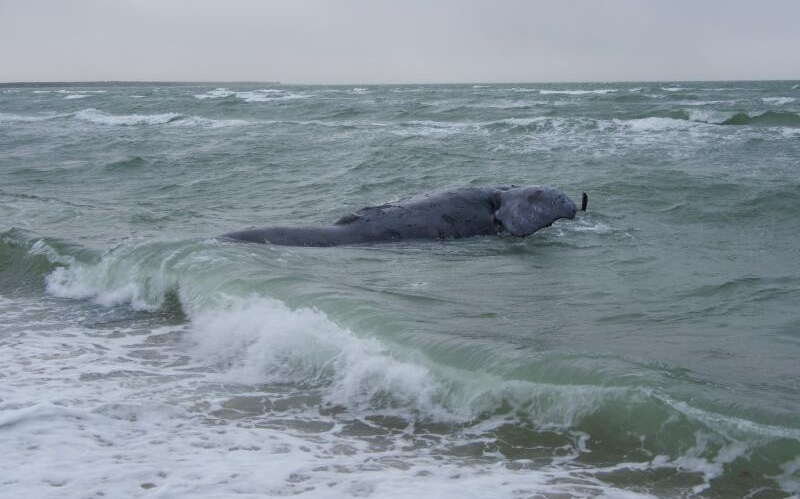
“Unfortunately, the gear is consistent with Maine trap/pot gear,” he said.
This is the first known time a North Atlantic right whale has become entangled with Maine gear since 2004.
“It is also the first right whale mortality with known Maine gear that DMR is aware of since the establishment” of the Atlantic Large Whale Take Reduction Plan in 1999, Keliher said.
The plan was developed to reduce mortality and serious injury of three stocks of large whales — fin, humpback and North Atlantic right.
Since 1997, the Maine lobster industry has engaged in the Atlantic Large Whale Take Reduction Team, which developed the plan, and provided NOAA with guidance in the development of measures to protect right whales.
“Further, the Maine lobster industry has invested millions of dollars to adopt gear marking, insert weak points and meet trawling-up requirements,” said Keliher.
Whale-saving measures
In 2021, federal regulators issued a 10-year plan that would have required Maine’s lobster industry to implement a 90% reduction of the risk of fishing gear entanglement.
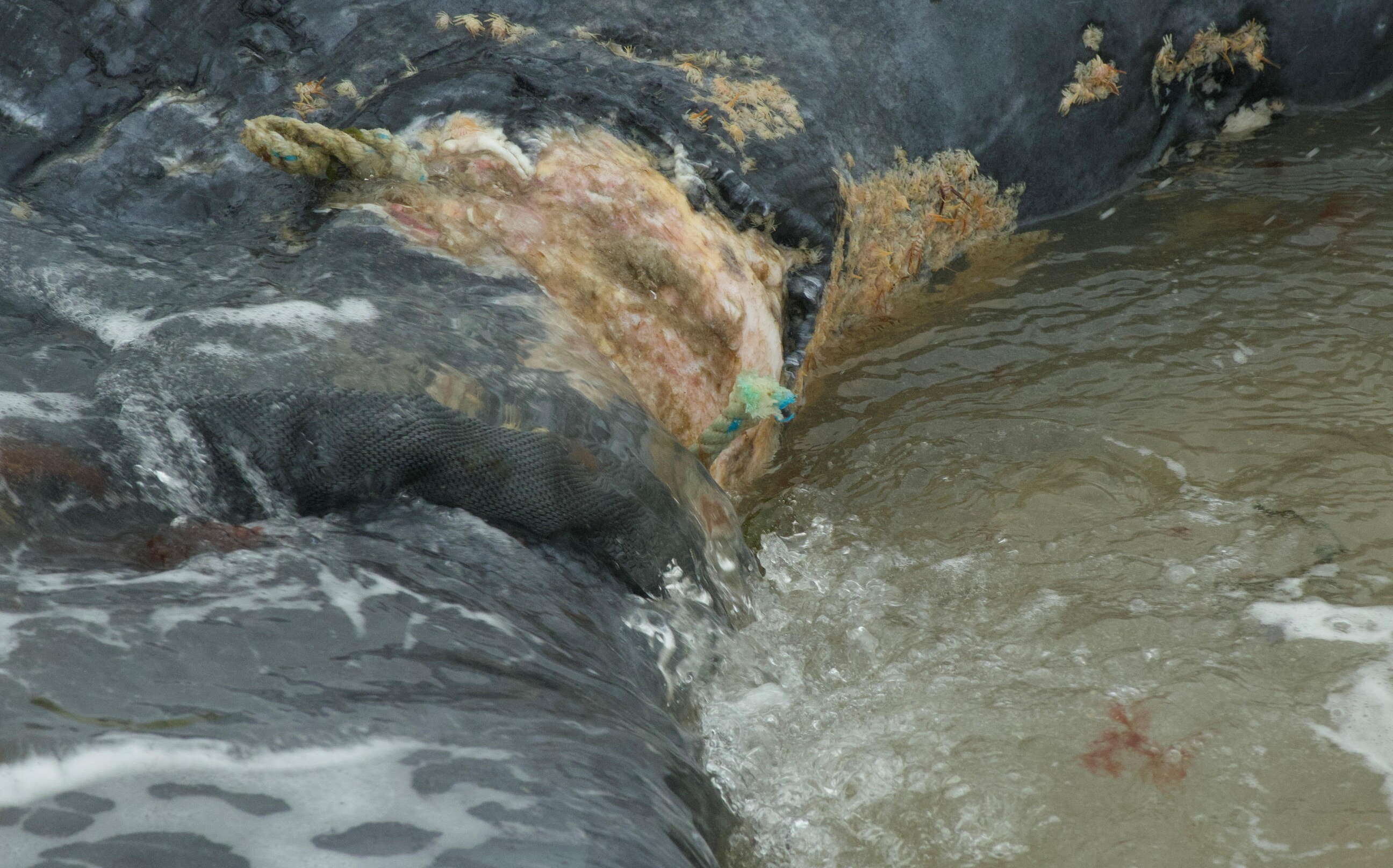
But last fall, the Maine Lobstermen’s Association won a lawsuit against the service to invalidate the plan, saying it would eliminate the fishery.
Maine lobstermen continue to fish under current whale protection rules while the service develops a new rule.
In the meantime, in December, the Department of Marine Resources was awarded $17.2 million in federal money to help improve data collection on the endangered whale, and improve the assessment of risk posed by fixed gear fisheries in advance of future federal rulemaking.
Another $17.9 million was awarded to develop on-demand fishing gear technology, envisioned as a way to eliminate the thickets of vertical rope in the water column that can block safe passage for whales.
"The death of No. 5120 does highlight the importance of DMR’s work to better understand right whale presence in the Gulf of Maine,” Keliher said. “It also validates the need for improved fisheries data, which will come from recently enacted requirements for state licensed and federally permitted lobster harvesters.”
The data collection initiative includes establishing a passive acoustic network, conducting visual surveys, improving the collection of fisheries data, and invest millions of dollars in a Maine on-demand gear library.
“Entangling a whale is not something any fishermen wants see or hear about,” Keliher said. “This news will undoubtably also brings with it a fear and anxiousness around what could come next from NOAA.”
He continued, “It is important to point out that while terrible news, it doesn’t change the fact that Congress has stated in law that this fishery is in compliance with the Endangered Species Act and the Marine Mammal Protection Act until Dec. 31, 2028.”
The DMR’s investigation into the death remains ongoing.
At the beginning of 2022, there were roughly 360 right whales — fewer than a year earlier.
According to NMFS, studies suggest that more than 85% of North Atlantic right whales have been entangled at least once. About 60% have been entangled multiple times. Entangling rope can cut into a whale’s body, cause serious injuries, and result in infections and mortality. Even if gear is shed or removed through disentanglement efforts, the time spent entangled can severely stress a whale, weaken it, and prevent it from feeding, swimming and reproducing.







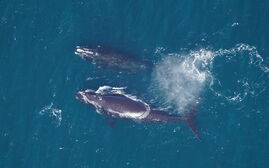





0 Comments